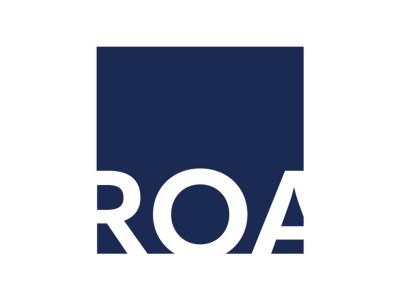January provided us with crucial guidelines regarding the referential use of trademarks. Following the Inditex case (C-361/22) the Court of Justice of the European Union (CJEU) delivered its long-awaited judgment in the Audi case (C-334/22) responding to the preliminary question raised by the Regional Court in Warsaw.
The case involved a Polish seller of non-original spare parts for motor vehicles, including grilles for older models of Audi cars. These grilles contained an element designed for attaching Audi’s emblem (four interlinked rings). As Audi owns the EU trademark protecting this emblem, it filed a lawsuit against the Polish seller for trademark infringement.
The defendant challenged the basic premise for protection under Article 9(2) of the European Union Trade Mark Regulation (EUTMR), namely the “use of the sign.” In its opinion, the element on the radiator grille designated for emblem attachment serves merely a technical function and would not be perceived as an indication of the origin by an average recipient of the defendant’s goods (as it primarily targets professional distributors rather than consumers.) Additionally, the defendant contended that although the CJEU has previously ruled out applying the repair clause from the design regime to trademark law (Ford, C-500/14), it should still be considered when interpreting relevant provisions of trade mark law, including Articles 9 and 14 of EUTMR.
The Regional Court in Warsaw sought guidelines from the CJEU on the issues that may be summarized as follows: (i) whether the defendant’s actions actually constituted trademark use under Article 9(2) of the EUTMR (meaning whether the defendant used a sign in the course of trade in a manner liable to affect one or more of the functions of the trademark) and (ii) whether the referential use limitation provided for in Article 14(1)(c) of the EUTMR could preclude Audi from prohibiting the use of the element designated for mounting the Audi emblem.
The CJEU determined that there is no need to include, by analogy, the repair clause in the interpretation of Article 9 of the EUTMR to maintain undistorted competition, since the EUTMR takes into account this objective, incorporating Article 14 concerning referential use of trademarks which limits their effects.
It further reiterated fundamental principles of EU trademark law that the term “use in the course of trade” requires active conduct in the context of a commercial activity intended to obtain an economic advantage, excluding actions in the private sphere. Moreover, an infringement of Article 9(2)(a) of the EUTMR (‘double identity’) requires establishing that the third-party use adversely affects or is likely to adversely affect one of the trademark functions, such as the origin, quality, communication, investment, or advertising. In the case of an infringement of Article 9(2)(b) of the EUTMR (‘likelihood of confusion’), it requires establishing that the third-party use adversely affects or is likely to adversely affect the ‘essential’ origin function.
Based on the foregoing, the CJEU concluded that the defendant made use of a sign in the course of trade in a manner liable to affect one or more of the functions of that trademark.
As regards the second question, the CJEU found that the purpose of using the sign identical or similar to the EU trademark by the defendant was to ensure that a spare part resembles the original radiator grille as closely as possible. The CJEU held that the use of a trademark for such purpose does not fall within any of the situations covered by Article 14(1)(c) of the EUTMR. Therefore, in this particular case, the use of the trademark was considered beyond referential use.
The main takeaway from the judgment is that the spare part may not contain the original manufacturer’s trademark, even if the sign is part of the design (or is necessary to mount the trademark). The judgment is clear and consistent with previous case law in trademark matters. However, it seems to overlook the recent EU systemic approach to spare parts. The European Commission is currently revising the EU designs regime. One of its objectives is to liberalize design protection for spare parts, granting consumers more freedom to repair their products (especially cars) at lower prices. If under the new regime, the repair clause still applies only to spare parts that are visually identical to the original parts (as it was determined by the CJEU in the Acacia and D’Amato case, C‑397/16 and C‑435/16), in practice the judgment issued in the Audi case will significantly limit the application of the repair clause. This is because, if – from the trademark perspective – the spare part cannot contain the element necessary to mount the original manufacturer’s trademark, it will not meet the must-match criteria set by the design law. Certainly, in the near future, we may anticipate a request for a preliminary ruling concerning the assessment of a similar case, but this time assessed from the perspective of the EU design law.

Written by Sylwia Stepaniuk-Cieśla
Counsel, ROA Rasiewicz & Associates
You may also like…
UEFA partners with Alliance for Creativity and Entertainment to enhance global anti-piracy strategy
October 21, 2025 - The Union of European Football Associations (UEFA) has officially joined the Alliance for...
EUIPO and UANIPIO welcome the integration of Ukraine’s trademarks into TMview
The European Union Intellectual Property Office (EUIPO) and the Ukrainian National Office for Intellectual Property...
Jägermeister succeeds in opposing the EU trademark application Alten Kräuterfrau for alcoholic beverages
Mast-Jägermeister SE filed an opposition on the grounds of Article 8(1)(b) – likelihood of confusion between the signs...
Contact us to write for out Newsletter













